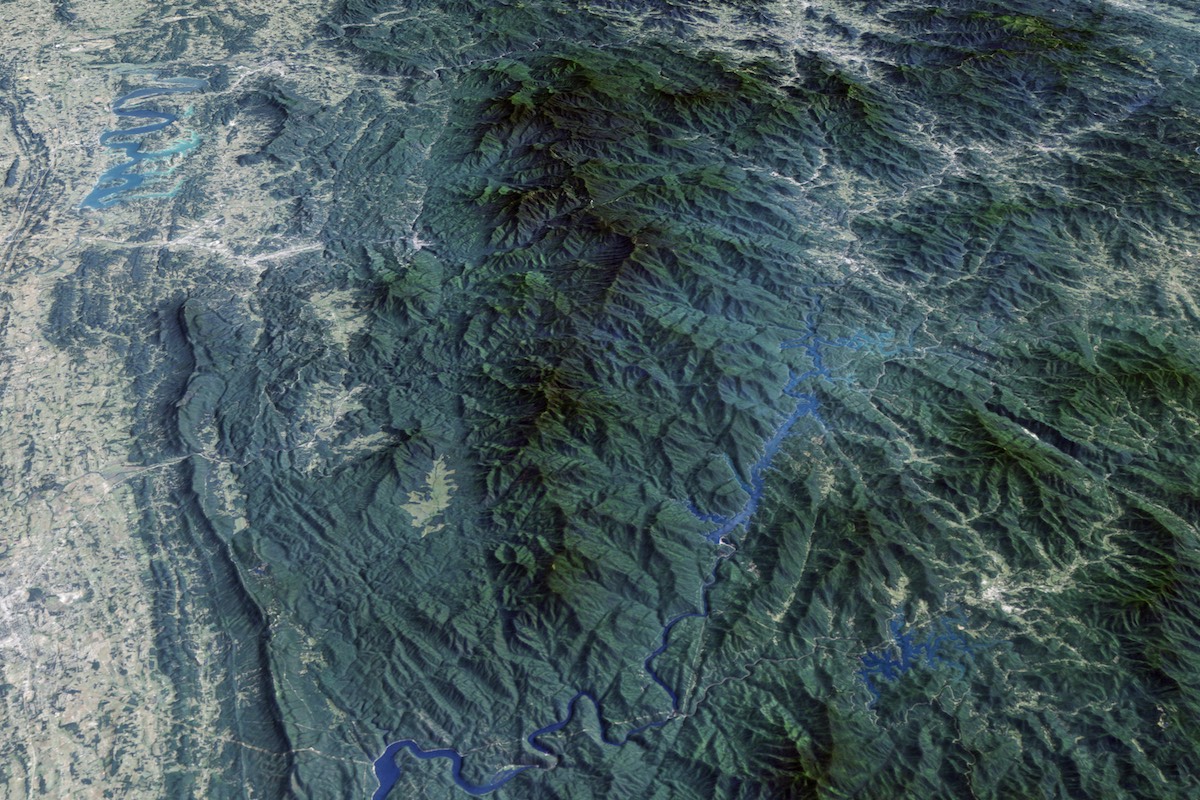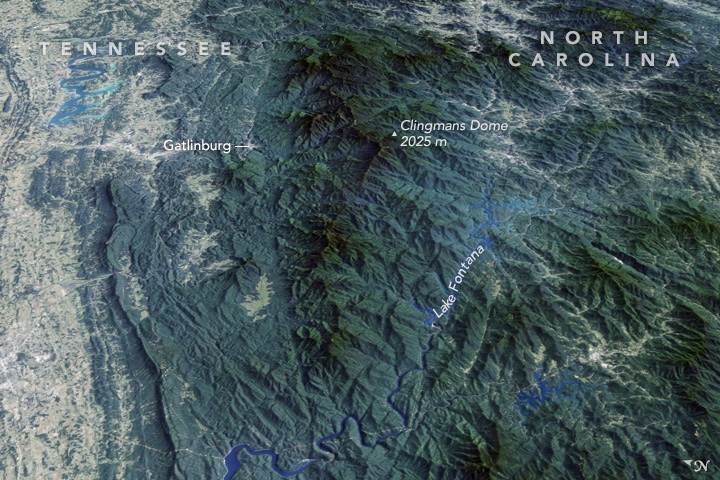Blue Mist Over the Great Smoky Mountains Visible from Space

A new satellite view of the Smoky Mountains shows the blue mist that gives the region its name.
The image, shared by NASA's Earth Observatory, is a best-pixel image of Great Smoky Mountains National Park in east Tennessee. That means that it's made up of the most cloud-free pixels taken from the Landsat 5 and Landsat 7 satellites between 1986 and 2013.
Gatlinburg, the town hit hard by a fast-moving wildfire in November, is visible in this view as a grayish blur tucked between ridges. East of Gatlinburg is Clingmans Dome, the highest point in Great Smoky Mountains National Park, at 6,643 feet (2,025 meters). Clingmans Dome is also the highest point in all of Tennessee. The body of water just right of the center of the image is Fontana Lake in North Carolina, a reservoir on the Little Tennessee River. [Photos: Stunning Views of US National Parks from Space]
According to the National Park Service (NPS), the Smoky Mountains were formed between 310 million and 245 million years ago, when the tectonic collision that created the supercontinent Pangaea rucked up the land into mountains as high as today's Rockies. Erosion softened their edges and lowered their soaring heights. Today, the mountains are eroding at a rate of about 2 inches (5 centimeters) every thousand years, according to the NPS.
The mist that creeps through the valleys in these mountains prompted the Cherokee to call the region "Shaconage," or "place of blue smoke." This haze, according to the Earth Observatory, is the result of humid air and volatile compounds exhaled by plants, which scatter blue light. Moisture is key to life in the Smokies. The valleys in the park get an average of 55 inches (140 cm) of rain a year, while some peaks average as much as 85 inches (216 cm) annually, according to the NPS.
At least 1,500 plant species make their home in the park, along with 68 mammal species, more than 200 types of birds and 43 amphibian species, according to the NPS. Thirty of those amphibian species are salamanders, making the Smokies the global center of salamander biodiversity. The largest salamander species in the park, according to the NPS, is the hellbender (Cryptobranchus alleganiensis). This salamander can grow to be 29 inches (74 cm) long.
Original article on Live Science.
Get the world’s most fascinating discoveries delivered straight to your inbox.

Stephanie Pappas is a contributing writer for Live Science, covering topics ranging from geoscience to archaeology to the human brain and behavior. She was previously a senior writer for Live Science but is now a freelancer based in Denver, Colorado, and regularly contributes to Scientific American and The Monitor, the monthly magazine of the American Psychological Association. Stephanie received a bachelor's degree in psychology from the University of South Carolina and a graduate certificate in science communication from the University of California, Santa Cruz.



